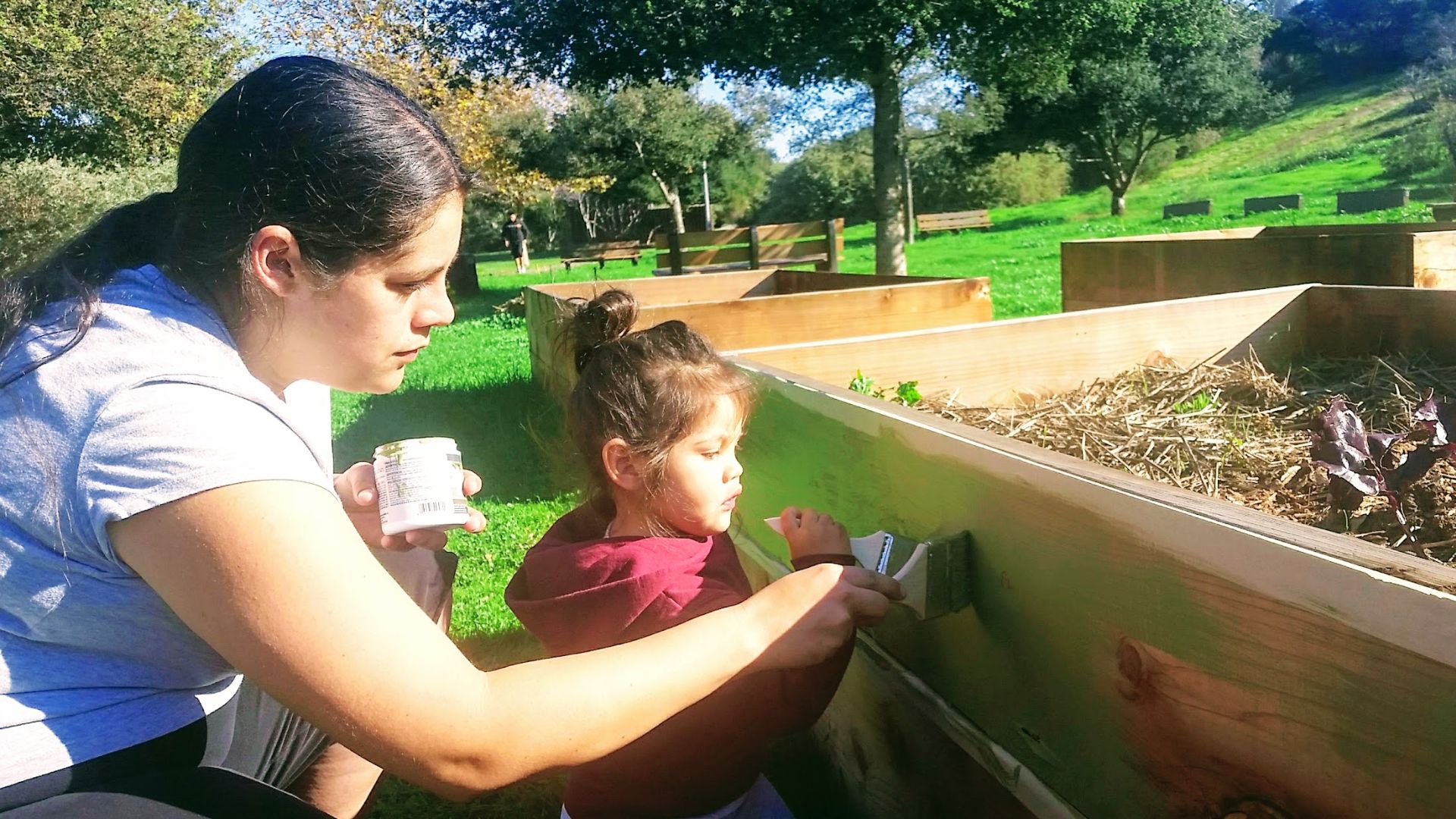A nursing graduate contributes to community health through gardening

Danielle Sapiens and daughter in the community garden
July 18, 2022
By Mark C. Anderson
Something inspiring is blooming in the heart of Salinas, with roots that reach to CSU Monterey Bay’s campus.
CSUMB Nursing program graduate Danielle Sapiens and her friend Leticia Hernandez — who’ve known each other for 20 years and bounce ideas off each other — started planning a community garden years ago in Natividad Creek Park that is now flourishing and developing new partnerships with healthcare providers.
The two wanted to create an inclusive space for people to cultivate and harvest food, convene meetings, spend time together, and—perhaps more than anything—engage in beneficial outdoor activity easily.
“We’re surrounded by all these fields,” Sapiens said. “We thought it would be awesome to have a space to teach children where food comes from. We talked about Alvarez [High School] or Hartnell College, but we settled on this spot because it bordered North and East Salinas.”
Their idea was to bring together two adjacent neighborhoods with noticeable disparities in income and resources. CSUMB’s Return of the Natives program was instrumental in developing and restoring Natividad Creek Park.
One of the classes Sapiens took as a student was Community Health Nursing Practicum, which, according to the class catalog, seeks to apply population health, service learning, and multicultural community building concepts: “Student[s] apply global health, health promotion and disease prevention, and social determinants of health concepts in diverse, underserved local populations to build skills to engage in social change and contribute to community well-being.”
When the two friends started planning the garden, both had toddlers at home and held educating local kids about growing food as a high priority.
“This started with kitchen table talk,” Sapiens said. “I had my own garden at my house, but [Leticia] took it to a whole other level.”
Sapiens helped to clear the land, pull weeds, spread mulch, and supported Hernandez where and when she could.
“[Leticia] is the backbone. I’m a volunteer,” Sapiens said.
Hernandez is the volunteer director of Local Urban Gardeners (LUG), the grassroots group that takes care of the community garden, of which Sapiens is a part of.
“I consider myself a steward with the land, working in collaboration with nature and community,” Hernandez said. She first learned how to garden in her 20s, despite having grown up in Salinas.
Herandez says that her friend Sapiens has always been very supportive: “She would come out to a lot of the community meetings, especially in the earlier years when we had to advocate at city council, asking for land. She rallied for us.”
Years of planning, fundraising and networking had to happen for the garden to be realized—including five years of toil before they broke ground.
Flash forward another five years and the garden is a hotbed of healthy activity. Advocacy groups use the garden for meetings; school groups come in to plant and learn; yoga students access a peaceful place to practice.
There have been more CSUMB collaborations, Hernandez says, including bringing in Service Learning students who have much appreciated the work, and a Latinx Engineering Day of STEAM activities with CSUMB agriculture science professor JP Dundore-Arias.
A collaboration with Salinas Valley Memorial Hospital reserves specific gardening beds for local youngsters with diabetes to grow produce.
LUG is trying to get a gardening prescription program started with healthcare professionals to address heart disease, diabetes and obesity challenges in the community. That kind of community care is in line with Sapiens’ own studies and profession: she recently started a nursing job at Natividad Medical Center.
In a project essay for one of her CSUMB Nursing program classes, Sapiens wrote: “That [collaboration] was a dream come true as my friend and I really wanted to use the garden as a teaching tool for where our food comes from. We are hoping that [local youth] get a sense of pride and independence from growing and eating their own healthy food.”
“I strongly recommend others start gardens near their own community,” she concludes. “If you grow it, they will come!”